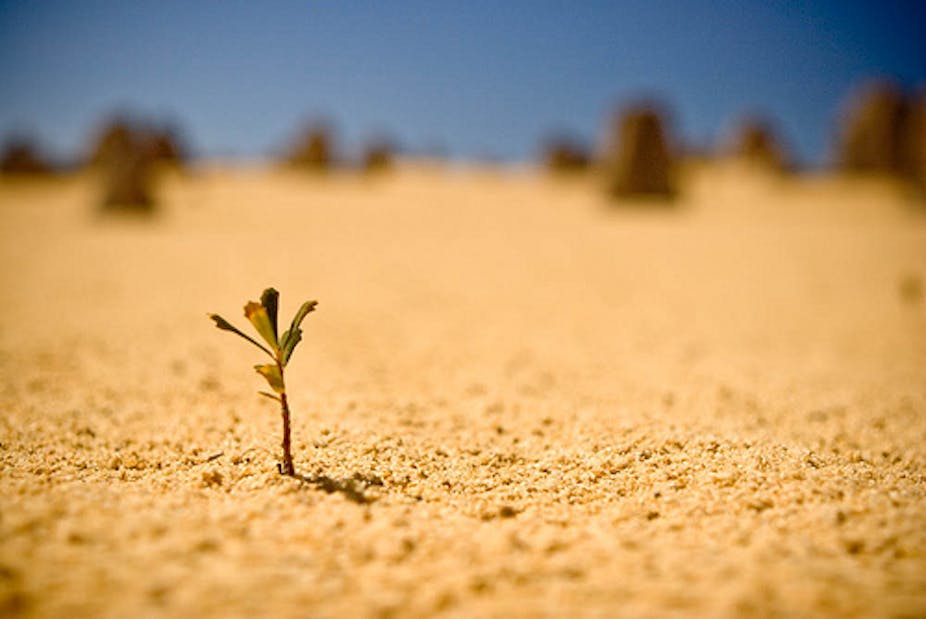For centuries, the shallow parts of the earth’s crust have provided us with fuels to burn in our fireplaces, foundries and generators. Now, as we try to break free from our reliance on some of the dirtier fuels such as brown coal, we have begun to develop a number of alternative or cleaner ways to extract energy from the earth.
Many of these new technologies have received a lot of good and bad press. They include energy extraction techniques such as geothermal, unconventional gas, coal seam gas, and coal liquefaction; as well as carbon pollution abatement techniques such as geological carbon storage.
A number of these technologies show considerable promise. They have the potential to provide ongoing energy supplies with reduced CO2 emissions. But the management and development of these opportunities is complicated. This is largely because many of them effectively utilise the same part of the earth’s crust - the space between the grains of sand within porous rocks, known to geologists as the pore-space.
The pore-space has typically been the preserve of the oil and gas industry, as perhaps the most valuable commodity contained within it are high-value natural hydrocarbon accumulations (crude oil and natural gas). As a result we have fantastic geological and geophysical data, gathered at huge expense, which allows us to model those areas that contain oil and gas reserves.
But as we begin to develop these new energy technologies we also need to stop believing that the commodity (the oil, gas, heat, water and coal for example) that we can extract and sell is the resource. Instead, we need to think of the pore-space itself as the resource.
The reason for this is that many of the uses for the pore-space described above have long lasting impacts on that part of the crust and the rocks surrounding it. In extreme cases, one use of a geological reservoir may in fact sterilise that part of the crust for alternative uses in the future (if for example a liquid waste gas is stored there it can’t be disturbed in the future).
The management issues that this throws up are considerable. Policy makers need to consider how one use of the rocks may affect the potential for other uses. They must weigh up the potential value of each of these use-cases to society (over decades at a minimum).
One of the challenges that we need to deal with now is how can we use science to meaningfully inform the policy decisions that will affect how sustainably these basins are used now and in the future. This includes modelling how activity in one may affect the others, and setting up monitoring systems that allow us to assess how our activities in the shallow crust are affecting the earth and the atmosphere.

It is critical that monitoring systems are in place long before new development begins in the regions. This would allow us to establish what the natural background levels are for a variety of things such as seismicity (earthquakes), atmospheric emissions from the earth and groundwater quality and flow.
Early monitoring of these systems will allow us to objectively assess our impact on the natural systems, both good and bad. For example, we currently don’t have a good idea of what the natural level of fugitive greenhouse gas emissions is from coal bearing basins (without any CSG or mining activity).
It’s possible that in some locations the natural background level of emissions of greenhouse gasses such as methane may be relatively high. The development of these fields and resulting reduction in fugitive emissions, could actually have a net benefit for both society (energy production) and the environment (reduced fugitive emissions).
On the other hand, there is also a genuine risk that some new technologies could be shutdown in response to misinterpreted natural activity or very minor “induced effect” interpreted out of context. A well-known example of this is the geothermal development in Basel, Switzerland. This project was closed down after a series of minor earthquakes were recorded following a reservoir stimulation program.
The ensuing panic resulted in the arrest of some of the technical personnel and the setting back of geothermal energy production in that part of the world by many years.

This is not to say that many, if not all of these new technologies can’t have an important place in Australia’s energy future. If history over the last hundred years has taught us anything, it’s that humans are ingenious engineers, and that when faced with a problem we’re very good at finding technological solutions to it. Take for example, the modifications to coal-fired power stations over the last 150 years. Such modifications have reduced the incidence of smog (low nitrogen oxide burners), lung disease (particulate removal) and acid rain pollution (wet sulphur dioxide scrubbers).
Australia is fortunate to be endowed with abundant hydrocarbons, unrealised geothermal resources, ground water and geological containers in which to store waste gasses from burning fossil fuels. We must remember though, that none of these resources are unlimited and neither is the pore-space that contains them.
Here lies the challenge of sustainable management of our use of the earth’s shallow crust. A challenge that will test the ability of today’s policy makers to make scientifically informed decisions that benefit not only our children, but also don’t harm the potential of our children’s children.

